Vampire killing kits, a Dutch ear iron, and Lord Byron’s mourning ring
Also, a puzzle ring that proposes marriage
Hey guys, guess what? I finally got the ’Rona. I’m just about out of it now, but damn, that was weird. It’s like a sliding tile game of symptoms; you’ve got a whole bunch of ’em on your board, but every day they shift around to create an exciting new combination of wretchedness.
In the midst of my malaise, however, the English auction house Hansons sold what they listed as a “late 19th century vampire slaying kit,” and I don’t want to skip over it.
So first off — yes, vampire killing kits are a thing. I first saw one back in 2004 at the booth of Naples, FL dealer Colin Strong at the Miami Beach Antiques Show, and I’ve seen them pop up at auction a number of times since then. Are they real? Well, that’s complicated.
Many of the kits contain true 19th century artifacts — pistols, crucifixes, powder flasks, Bibles, the boxes themselves, etc. — alongside things like stakes and mallets and jars of holy water, and the story goes that they were assembled in the late 19th century to reassure anxious tourists on their way to Eastern Europe. But, unfortunately — and much like the supposedly 19th century pistol ring I wrote about a couple years ago — there is no written record of any sort of kit like this existing until the 1980s. And that’s just super fishy, considering the reams of vampire-related lore in the 150+ years prior.
And not only that, the (fantastic) Mercer Museum in Doylestown, PA has a vampire killing kit in their collection that they brought to Delaware’s (also fantastic) Winterthur Museum in 2004 for extensive scientific analysis. While some of the kit’s materials were consistent with a 19th century date, the testing also found that the “silver” bullets were pewter, the magnifying glass contained barium — so was therefore modern — and the paper label referencing a mysterious “Dr. Ernst Blomberg” contained brightening agents that were only introduced into the paper industry after 1945.
Another Blomberg kit was sold by Sotheby’s back in 1994, and this Associated Press article makes no bones about its authenticity.
The kit probably was assembled in 20th century America, not 19th century Europe; the cross-pistol looks like it’s from the 1830s, but was really made within the last 15 years; and if there was ever a “Professor Ernst Blomberg,” supposedly the name of the kit’s creator, he has not gone down in the annals of vampire fighting.
“I’m afraid it’s only a pastiche, a romantic curiosity,” said Nicholas McCullough, a Sotheby’s consultant. “There was never a vampire killing kit.”
“The case itself is mid-19th century, probably English, of no particular rarity,” added McCullough. “But presented as a vampire killing kit, it opens up whole new vistas. Everyone’s intrigued by it, from interior decorators to jokesters.”
Despite the knowing wink, the kit — which carried an estimate of $3,000 to $4,000 — still sold for $12,000.
Another particularly nice vampire killing kit (above) currently resides in the collections of the Royal Armouries in Leeds, England, and their notes also tell it like it is:
This is one of over 100 so-called vampire killing kits extant (as of 2016), thought to have originated as novelty items in Britain, c1970, though the first written evidence is from the United States (1986) and most examples are sold there. There is no evidence to suggest that anything like them existed prior to this date, significant as the heyday of ‘Hammer’ horror movies.
The Armouries kit has been extensively researched by their Keeper of Firearms and Artillery, Jonathan Ferguson, and you can click here to see a terrific video he did about the piece for Atlas Obscura.
The question is, though: If something never existed in the first place, can it be a fake? Duuuude. I’m gonna save that one for when the edible hits.
In 2005, a Portobello Market antique gun restorer and dealer called Michael de Winter emerged with the announcement that he had personally made the first vampire killing kit back in 1972. He’d wound up acquiring a mediocre pocket pistol as the result of a trade, and was wondering what he could do with it:
“Having an extremely fertile imagination and being an avid reader, I was inspired. It occurred to me that I could produce something unique that would be a great advertising gimmick and would attract people to my stall. The Vampire Killing Kit was on its way.”
De Winter assembled everything and printed up the label, inventing the mysterious Blomberg as well as his gunmaker pal, Nicholas Plomdeur, in the process.
“No expense was spared, enabling me to produce a totally unique item. Can’t possibly be a fake can it! This was not a copy of anything that existed. …
So, that’s how it all started, I seem to have spawned a lovely silly myth and I wonder how many of “Professor Blomberg’s Vampire Killing Kits” are around. It is interesting to note that the majority of kits produced use both of my invented persons, ie Professor Blomberg and Nicholas Plomdeur. Additionally they seem to like my phraseology, ie, use of words such as populace and manifestations of evil. What this shows of course, is that they are all copies of my original and that includes the kit which fetched $12,000 at Sotheby’s and the kit which fetched $21,000 in the States.”
(He also admits to getting his monsters mixed up, and forgetting that silver bullets are for werewolves, not vampires, lol.)
No one knows for sure if de Winter really DID create the first kit, but it’s clear from the many accounts I’ve read that they didn’t start appearing on the market until the late 1970s – early 1980s, so the timeline tallies up. And does it even matter? Despite tons of online debunkery, vampire killing kits keep selling. The “late 19th century” Hansons kit that prompted this post was estimated at £2,000 – £3,000 ($2,400 – $3,600) and sold on June 30 for £13,000 ($15,645).
One thing sets the Hansons kit apart, though: provenance. It was formerly the property of Lord William Malcolm Hailey (1872-1969), a British peer and administrator of British India, and pieces in the kit — including the box, mallet, stake and wooden tool — are stamped with his initials. The removable interior tray also includes his full name and address.
Unfortunately, we don’t know WHY Hailey owned the piece. Did he believe it? Was it given to him? And when did he acquire it? Charles Hanson, owner of Hansons Auctioneers, notes:
“Whether through fear or fascination, it’s interesting to know a member of the highest aristocratic social order, a man with a place in the House of Lords, acquired this item. It reminds us that the vampire myth affects people from all walks of life. I think the aristocratic connection made this object even more desirable and, perhaps, helped it on its way to a particularly strong result.”
No matter what, vampire killing kits are objects of fascination. Even if we know they’re a load of old cobblers, they still let us giddily revisit our younger selves — the ones who were under the covers reading scary stories with a flashlight after bedtime.
Jonathan Ferguson from the Armouries clearly has grown to appreciate them as a form of modern art and culture, and he talked about them a bit more in this guest post for the British Library’s English & Drama blog. I’ll let him have the last word:
Although I had set out to 'debunk' their very existence, I came to realise that these enigmatic objects transcend questions of authenticity. They are part of the material culture of the gothic; aspects of our shared literary and cinematic passions made physical. Lacking any surviving artefact of vampirism either folkloric or fictional, fans of the gothic had created one to fill the gap. So whilst we at the Armouries still plan to scientifically test our vampire kit, and there is the possibility that it's early rather than late 20th century in date, for me the outcome has almost become moot. Vampire killing kits are genuine artefacts of the Gothic fiction that still provides sustenance to our most beloved monsters.
Note: Don’t think I’m not aware that this debate is EXACTLY what a certain kind of vampire would want.
These 20th century mahogany library steps sold for $3,350 on July 7th in the Sotheby’s Paris Style Paris: Mobilier et objets d'art auction, and they’re beautiful. But I’m really only including them because Sotheby’s uses the phrase “the feet reunited with a stretcher” in the description, and it’s so wonderfully Dashiell Hammett-era sinister. “Oh yeah, pal? Keep walking or I’m gonna reunite your feet with a stretcher.”
Woolley & Wallis’s Fine Jewellery sale on July 14-15 is loaded with good stuff, and this mourning ring is a Day 2 standout. Dating to 1824, it is a memorial ring for Lord Byron, and one of only two in existence that contain a lock of Byron's hair. (There are four Byron mourning rings in total, and one is actually in the Pforzheimer collection in the New York Public Library, but I think you need permission to access the collection.)
Made by Charles Rawlings, the gold and enamel ring features a central plaque inscribed “BYRON,” with a baronial coronet above, and the words “IN MEMORY OF” wrapping around the band between carved floral borders. A compartment containing a lock of Bryon’s hair is placed in the interior of the ring, and alongside the hallmarks, an inscription reads “Died 19 Aprl 1824 at. 36.”
As for the provenance, Woolley & Wallis think the ring:
was possibly gifted by Augusta Leigh (half-sister to Lord Byron) to Reverend Francis Hodgson, an assistant master at Eton and close friend of Lord Byron upon Byron's death. A ring matching this description and mentioning a lock of hair was sold at Christie’s in January 1899 by a Mrs Hodgson, selling to a J. Ward. The present ring was rediscovered and sold in the UK in 2013, and has been subsequently kept in a private collection.
I actually remember seeing it online a few years back, possibly sold by Rowan and Rowan? Which would make sense; they always have the best stuff. The ring is estimated at £8,000 – £12,000 ($9,600 – $14,400).
Please forgive me for posting another tiara after last month’s Tiarapalooza1, but it’s rare to see a colorful version, so I’m pointing it out just for funsies. This one dates to the early 19th century, and is a composite piece comprised of three starburst clusters of gemstones mounted on a tiara frame and separated by large oval amethysts and aquamarines with foliate surmounts. The starbursts are made up of oval and pear-shaped multicolored gemstones including peridot, aquamarine, hessonite garnet and topaz. This piece is also included in Day 2 of the Wooley & Wallis sale, and it carries an estimate of £12,000 – £15,000 ($14,400 – $18,000).
The Byron ring reminded me to pop over to the Rowan and Rowan site and see what was new, and now I’ve completely fallen in love with this gold and enamel rebus marriage proposal ring.
Circa 1800, it features a proposal in a puzzle. In gold framed by turquoise colored enamel (with thin bands of white enamel at the borders), the ring states “DIE 24 arrow XX mo ANCHOR i.” The dealer deciphers it as:
DIE 24 is Latin for ‘on the twenty-fourth day’. XX symbolises a pair, a couple. Mo is an abbreviation of the Latin matrimonium [marriage]. The anchor symbol plus i stands for ‘I hope’. So the whole puzzle means ‘I hope to marry you on the 24th.’ The arrow after the number 24 represents a marriage starting on the 24th and then going forward, spending the rest of their lives together.
Rebuses, ciphers and hidden meanings are not unusual in antique jewelry, and in case you missed it, there was a recent article in the New York Times about a Harvard grad student who has unearthed a cipher involving Catherine of Aragon and Henry VIII in a book of Hans Holbein’s jewelry commissions.
Now this is something I’ve never seen before! It’s a Dutch gold ear iron, or an oorijzer. Skinner is including it in their upcoming European Decor and Design (July 24 - August 3) auction, and they suspect it’s 19th century, and from Friesland. According to the lot notes:
The oorijzer (ear iron) is part of the traditional woman's costume in the Netherlands, particularly in the Friesland and Zeeland provinces. Originally designed as a bracket to hold a hat in place, the oorijzer developed into a public accessory and display of wealth, rather than a functional item. Typically the earpieces are connected only by a band of material resting over the ears and around the back of the head, not a full cap. The oorijzer here is a larger example that would have been owned by a very wealthy woman.
It comes with a white bonnet and a black silk bonnet in a hat box, and according to the V&A, a cap was usually worn underneath the oorijzer, and then one or more lace caps were placed over top of it. This one is estimated at $5,000 – $7,000.
That’s all for now, friends. I hope you enjoyed this edition of Dearest, and if you’re not already signed up for Dracula Daily — the email version of Bram Stoker’s Dracula that continues to take the Tumblr youths by storm — you’re a bit late to the game, but it’s not too late to catch the rest of the book. Even if you’ve read it already, the newsletter format takes the novel’s epistolary style to a whole new and delightful level. Who DOESN’T want to get an email from Dr. Seward with the latest news about his creepy patient with the bugs? Ok I’ll shut up now. Just, vampires. Good stuff. Bye.
M xx
In addition to the regular monthly newsletter, last month my paid subscribers received an additional newsletter chock full of contemporary tiaras, some truly spectacular. Hit the button below if you want to sign up for a paid subscription and see more!




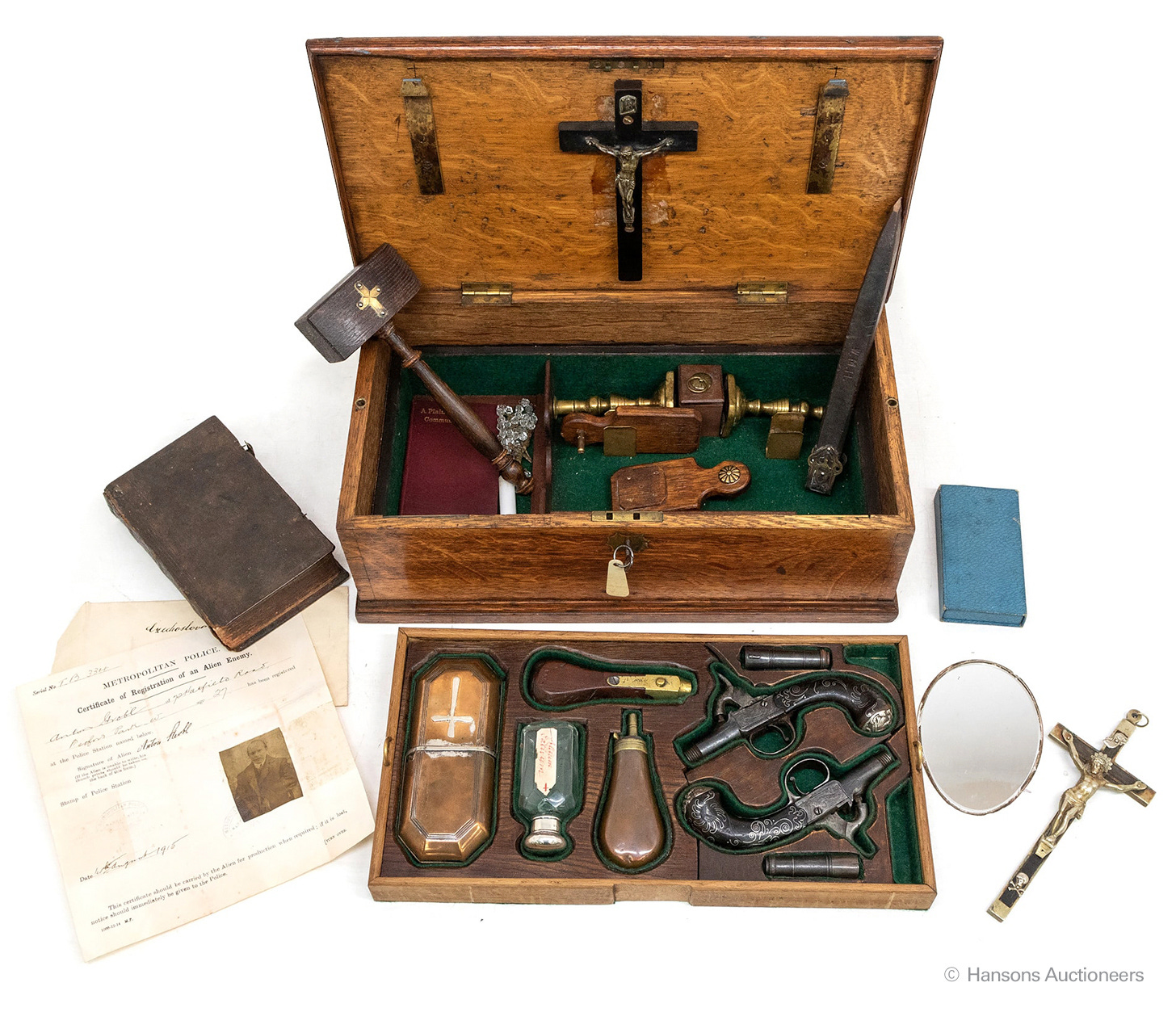

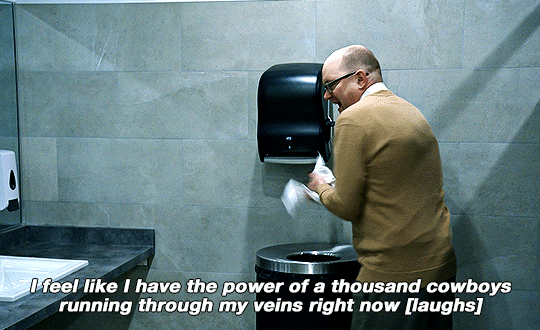
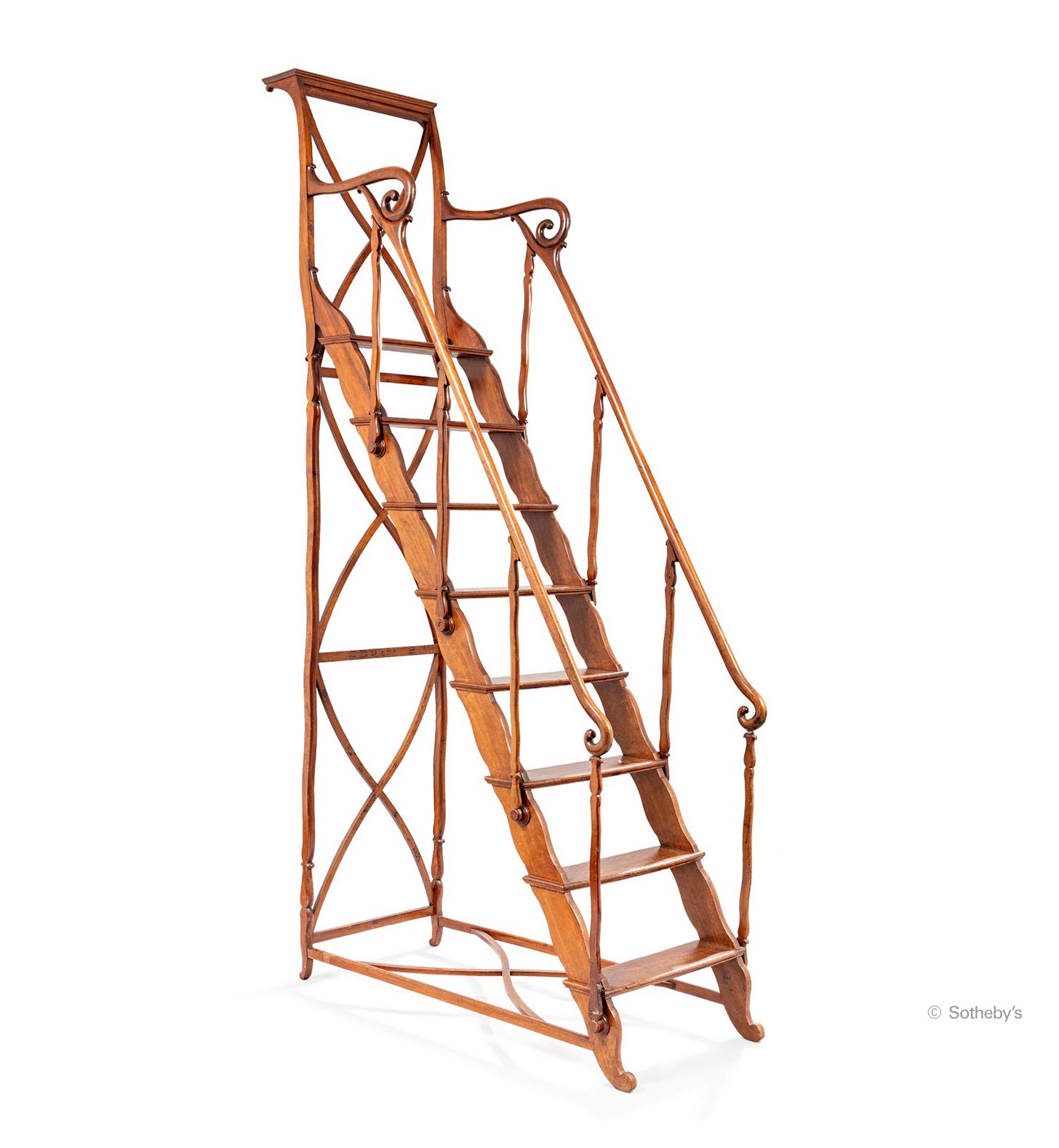

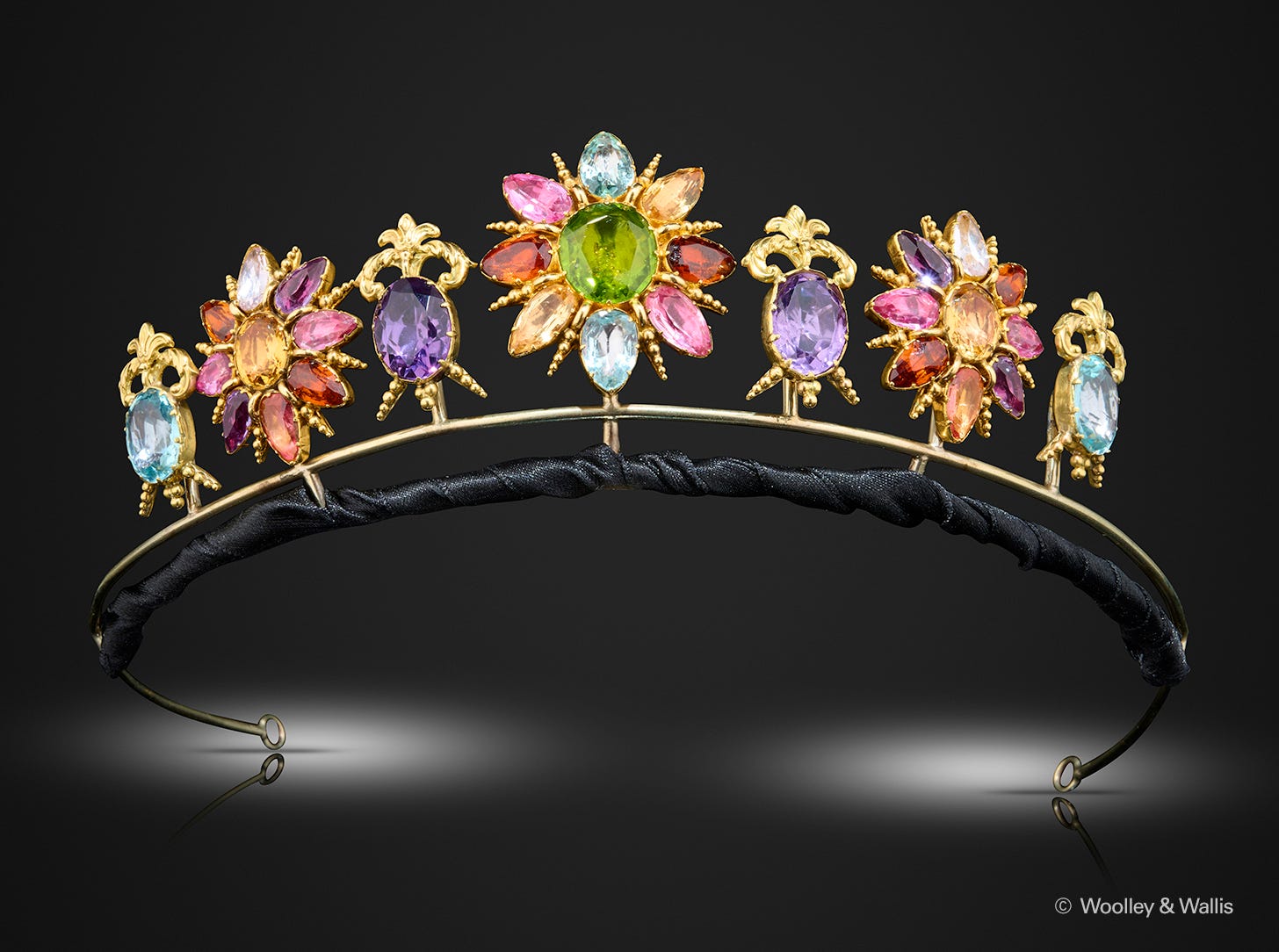
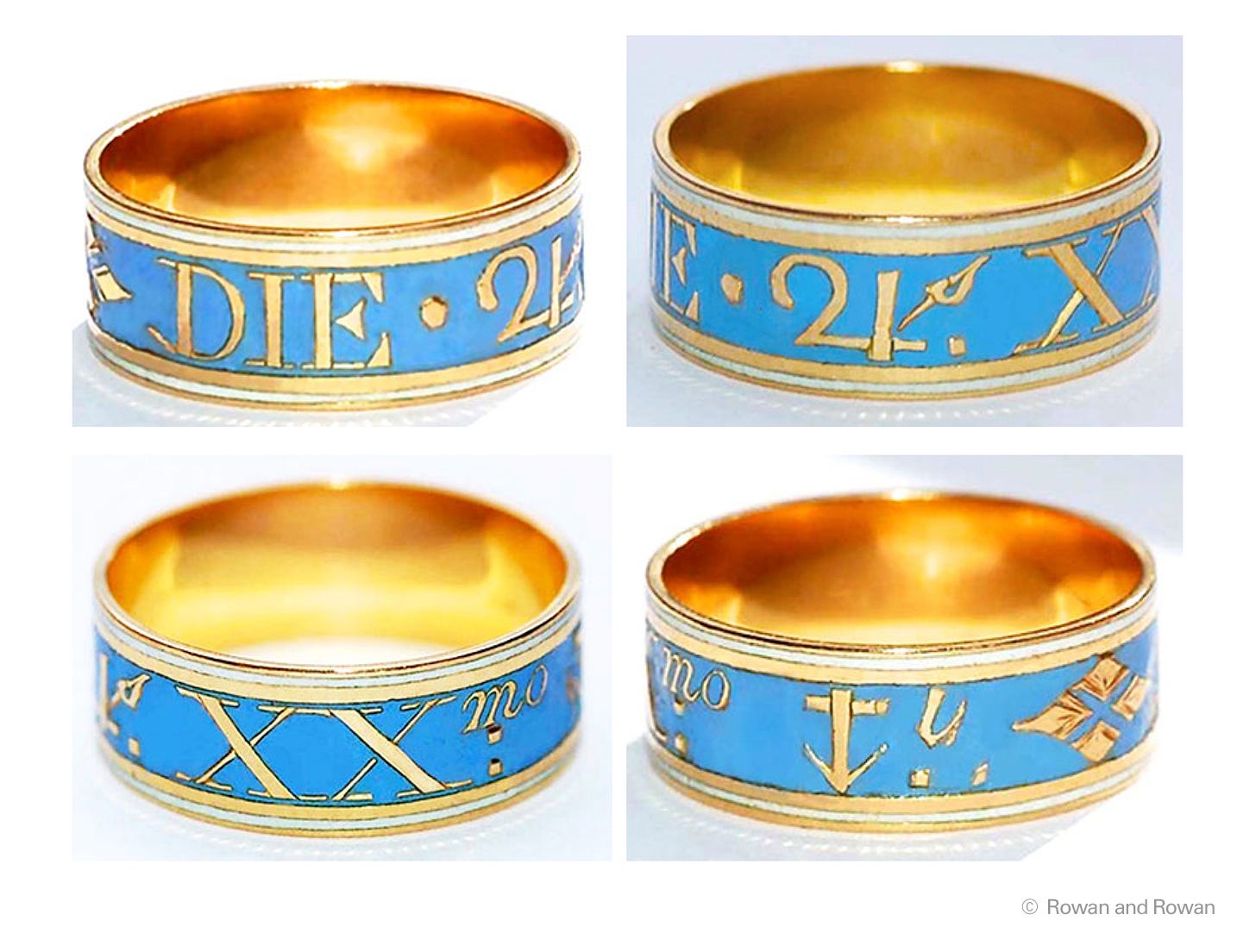

A tiara is what has been missing from my life. It's gorgeous!
So here for the vampire kit.....